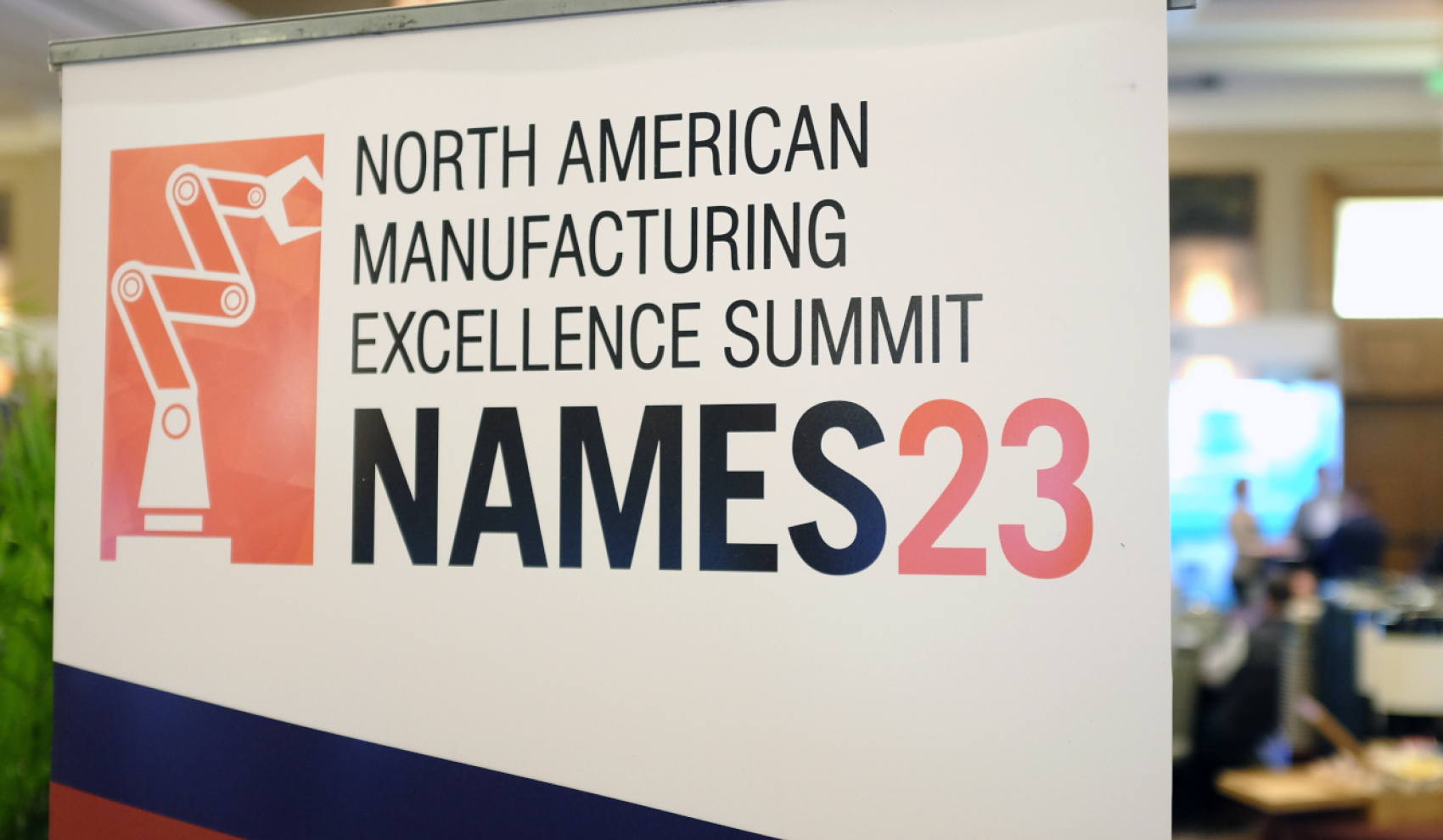Decision Intelligence in Manufacturing: What We Learned at NAMES 2023

We had the chance to connect with hundreds of executives, manufacturing decision makers, and thought leaders in Fort Worth, Texas last week at the 2023 North American Manufacturing Excellence Summit.
There are exciting things happening in the world of manufacturing, but there’s also a growing realization that more data, more dashboards, and more point solutions won’t be enough to help companies remain competitive.
“The common thread is that everyone is struggling with data silos,” one person told us in a casual chat on the show floor. “Manufacturers have got multiple ERPs for different geographies or business units. They’ve got lots of data. But they need to connect the dots.”
“Right now,” this person said, “we’re just throwing bodies at the problem.”
Unmade Decisions are Leaving Money on the Table
The bigger challenge that companies are facing is the impact of decisions they aren’t able to make today because they lack the time, the visibility, or the ability to analyze data quickly enough to identify them. Those unmade decisions range from decisions that cut costs by right-sizing inventory, to the ability to adapt to changing demand patterns or market volatility, to being able to respond effectively to line-down situations.
“People are just starting to realize what’s being left on the table,” one person told us.
Manufacturers have already embraced greater visibility. They’ve deployed digital control towers that highlight risks with real-time visibility and insights across the supply chain. They’re investing in industrial internet of things (IIoT) solutions that enable proactive equipment maintenance and better quality control.
Yet a major challenge manufacturers face today is leveraging that data in time to have the greatest positive impact. As my colleague Ram Krishnan said recently, “People are drowning in dashboards.” What they need is the ability to make better decisions.
Decision Intelligence makes this possible. A Decision intelligence platform combines end-to-end data with AI and machine learning capabilities in order to understand challenges and identify risks and opportunities. It gives users real-time recommendations, then executes the users’ decision by writing back to ERPs and other systems – and learns from those decisions and their outcomes in order to improve future recommendations.
A Decision Intelligence platform also makes it possible to automate decisions according to predefined rules or confidence scores, so that manufacturers can respond to changing situations in moments, not hours or days.
Growing Interest in Decision Intelligence
The manufacturers we spoke with are still learning about Decision Intelligence, but over three days at NAMES 2023 we had many conversations with leaders who are amazed by the transformation this technology makes possible. Decision making was also a recurring topic in sessions, with presenters and audience members alike discussing how to improve decision making across the end-to-end manufacturing process.
Whether a company has grown through M&A – with each unit continuing to use its own systems and processes going forward – or whether its operations are complex after decades of organic growth, data silos and complex tech stacks are common. Decision Intelligence is ideal for breaking down process barriers and harmonizing data across cloud-based, on-premise, or third-party systems and sources.
As one of my colleagues put it, “Manufacturers have a lot of information. It’s the ability to take action that’s critical. What do I do with that information? How do I use it to drive results?”
On the expo floor, we found ourselves discussing use cases for Decision Intelligence that help manufacturers capitalize on end-to-end visibility and make data-driven, better informed manufacturing decisions.
For example, manufacturers may have sensor data that warns when a line needs to go down for maintenance – but how do you go beyond that knowledge and know the best way to maintain service levels? How can you adjust production schedules?
Or, for manufacturers who don’t hold much inventory, how do you adjust in real time when there’s a spike in demand? Or, when a key ingredient becomes constrained? Or, when there’s an opportunity to reduce carbon emissions by choosing a different shipping method?
Sustainability is another major trend, but achieving the sustainability goals manufacturers want to reach means mastering not just the small details, but the bigger picture that comes with end-to-end visibility – to become more knowledgeable about what’s happening outside the factory floor, from suppliers to logistics partners, and factor that data into decisions.
Visibility is Crucial
But those changes are next to impossible to achieve when information isn’t accessible, or when manufacturers have to rely on manual decision-making tools like spreadsheets that don’t allow that “big picture” to be visible.
As one person told us on the show floor, “We’re afraid of doing nothing.” Lack of speed and accuracy in decision making will make it difficult or impossible to remain competitive.
All in all, we heard a great deal of excitement at NAMES 2023 from manufacturers who see the benefits of digitizing, augmenting, and automating decision making. There is a new realization that the time to invest in AI and Decision Intelligence is now, in order to be ready for both today’s and tomorrow’s challenges.
Learn how Aera Decision Cloud™ is helping manufacturers make data-driven decisions – read how global steel producer DeAcero digitized decision making and improved customer service levels with Decision Intelligence.






